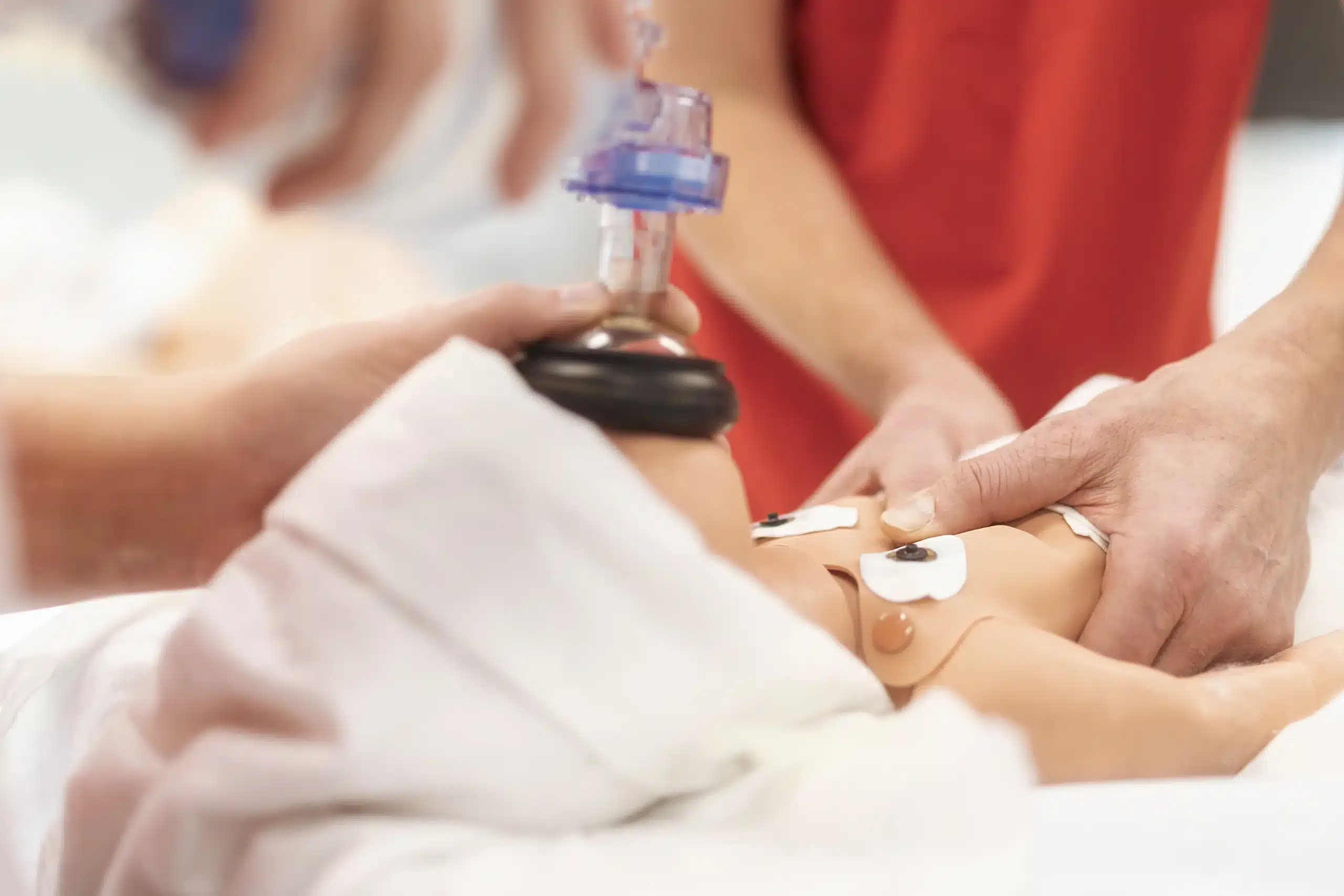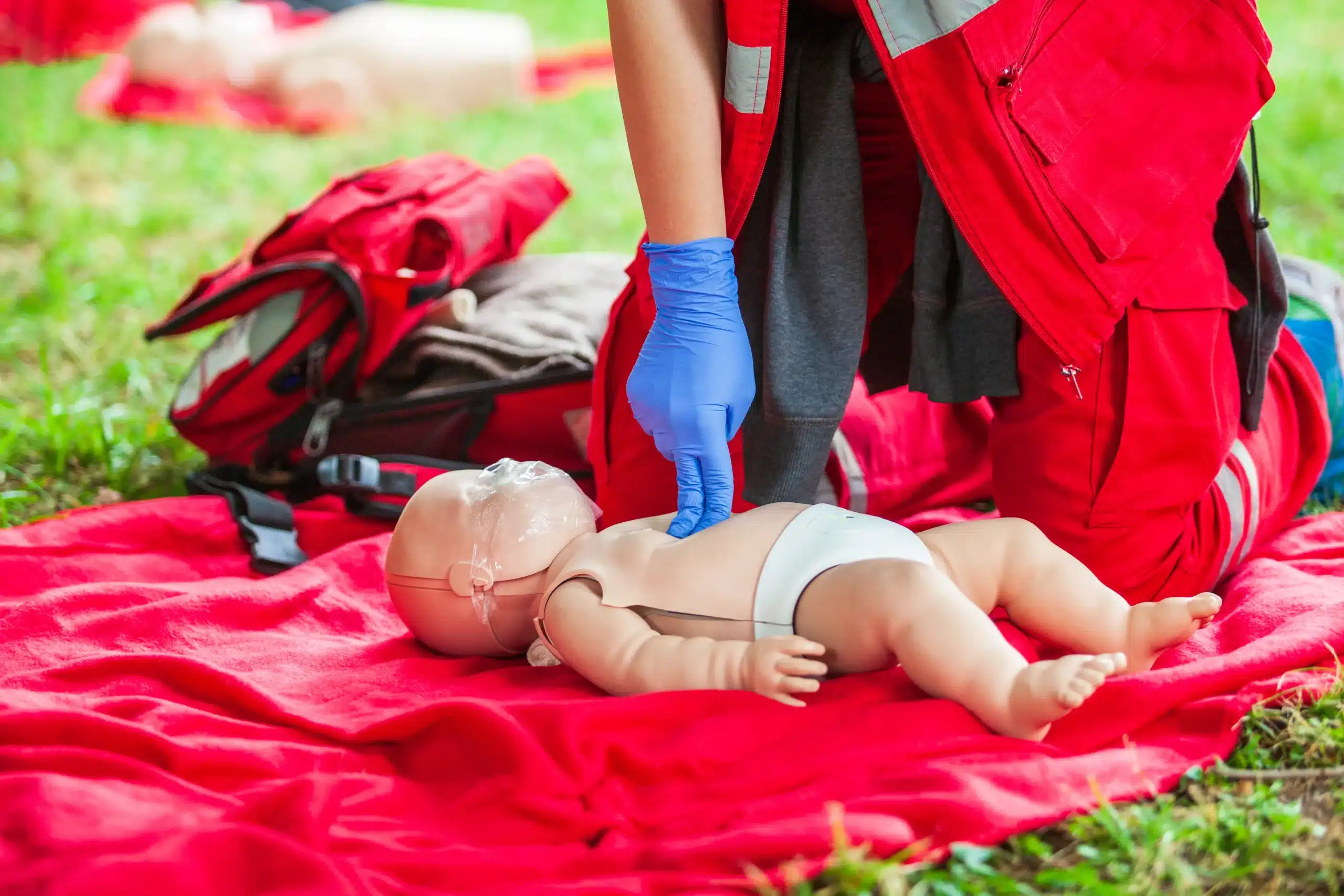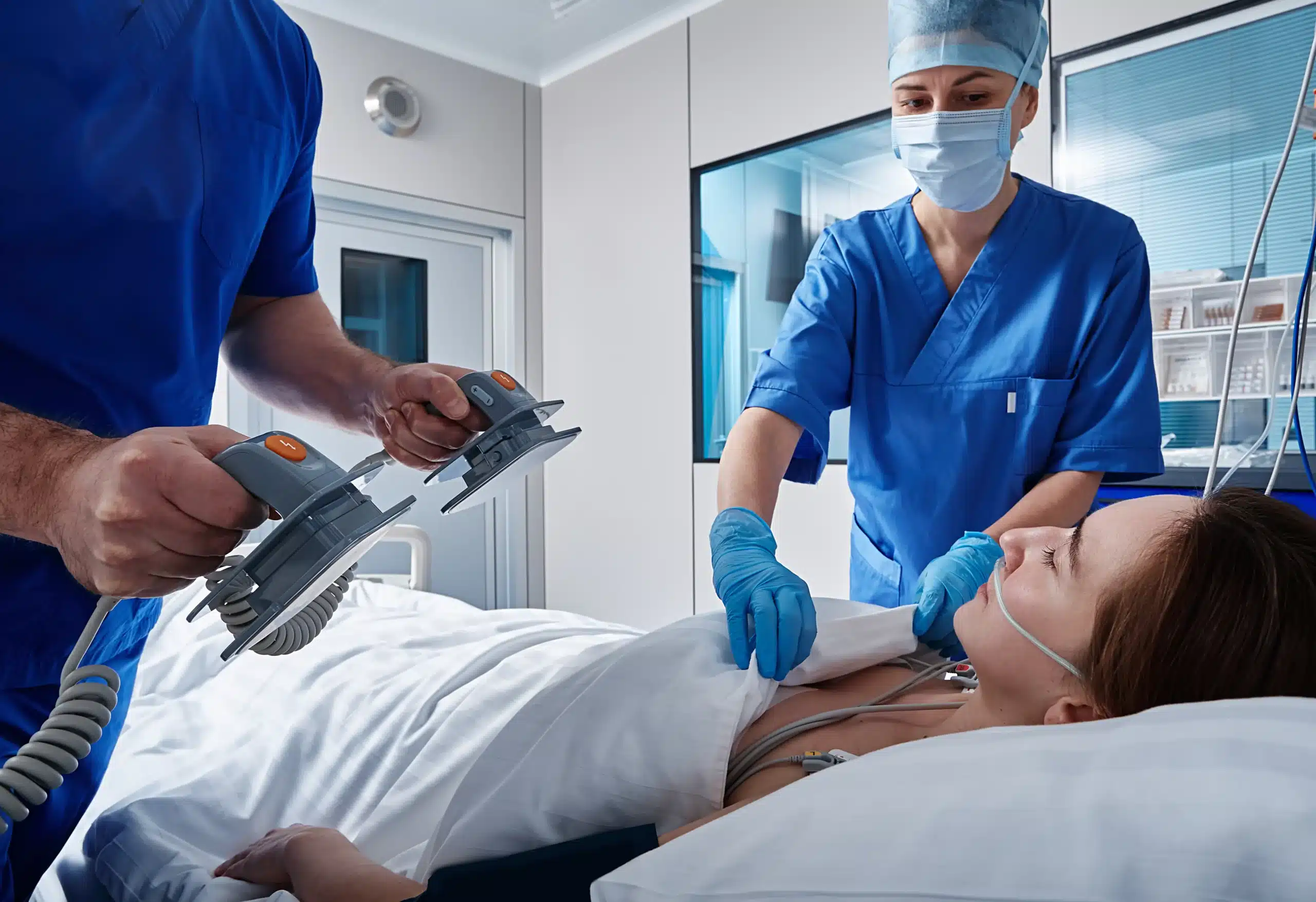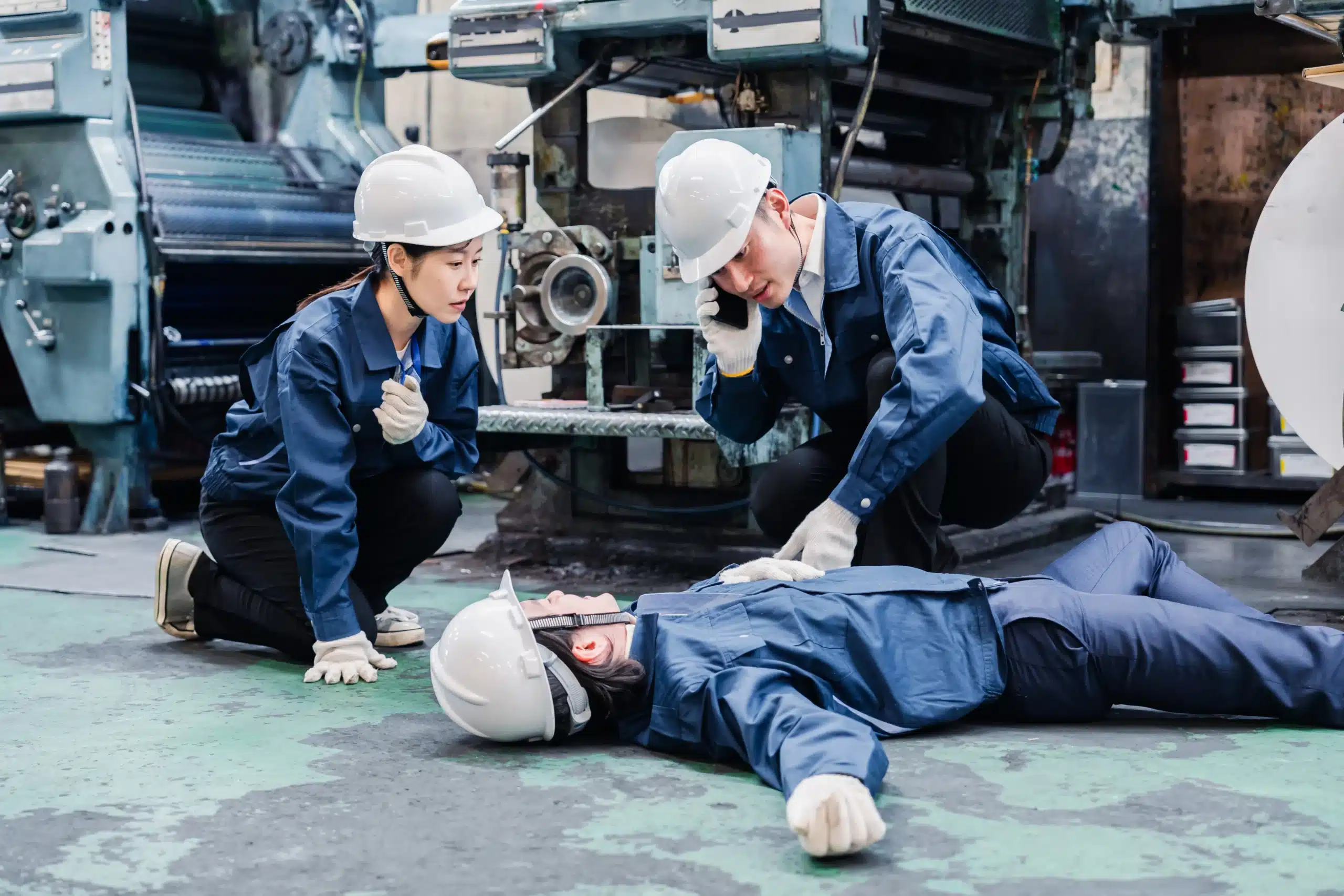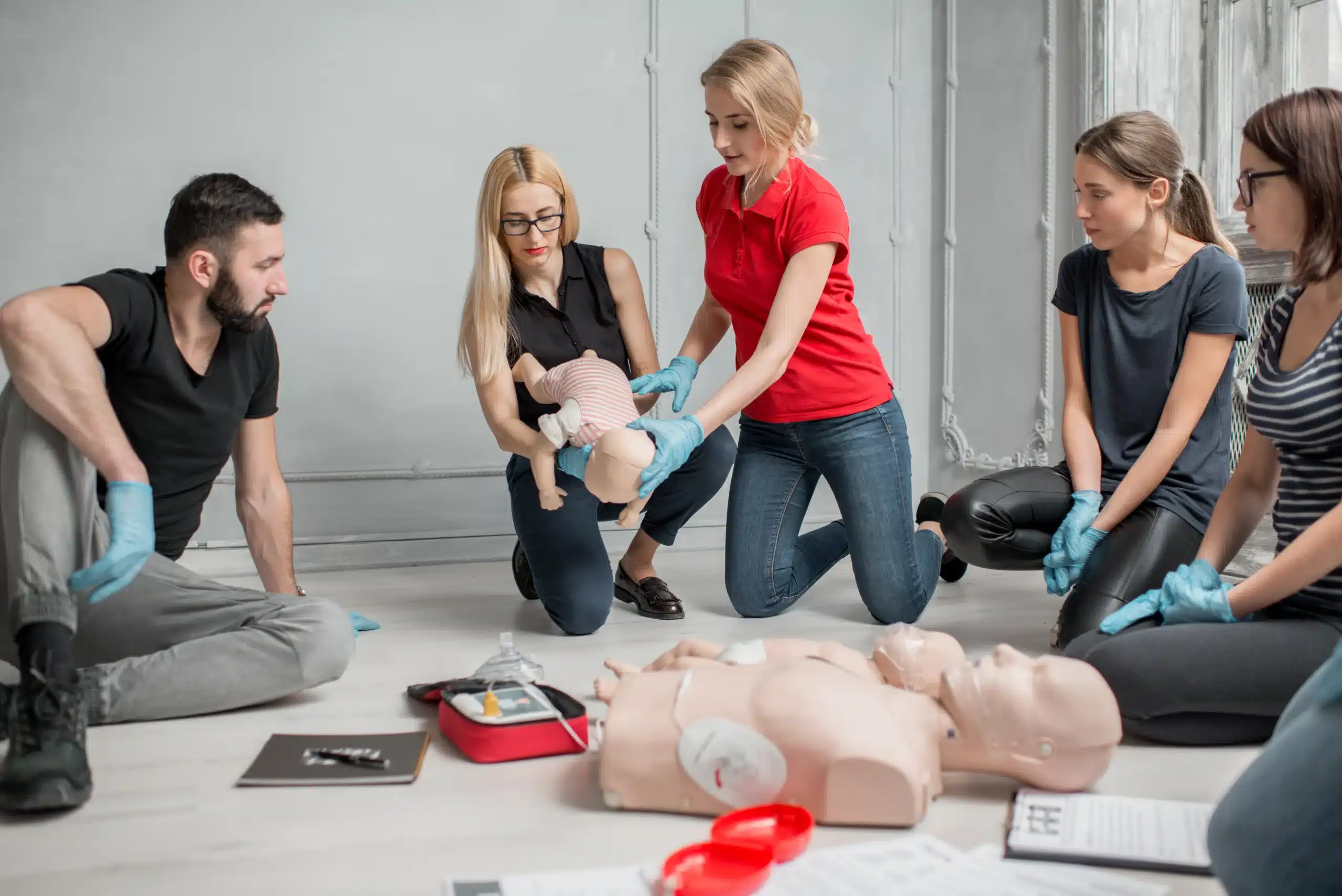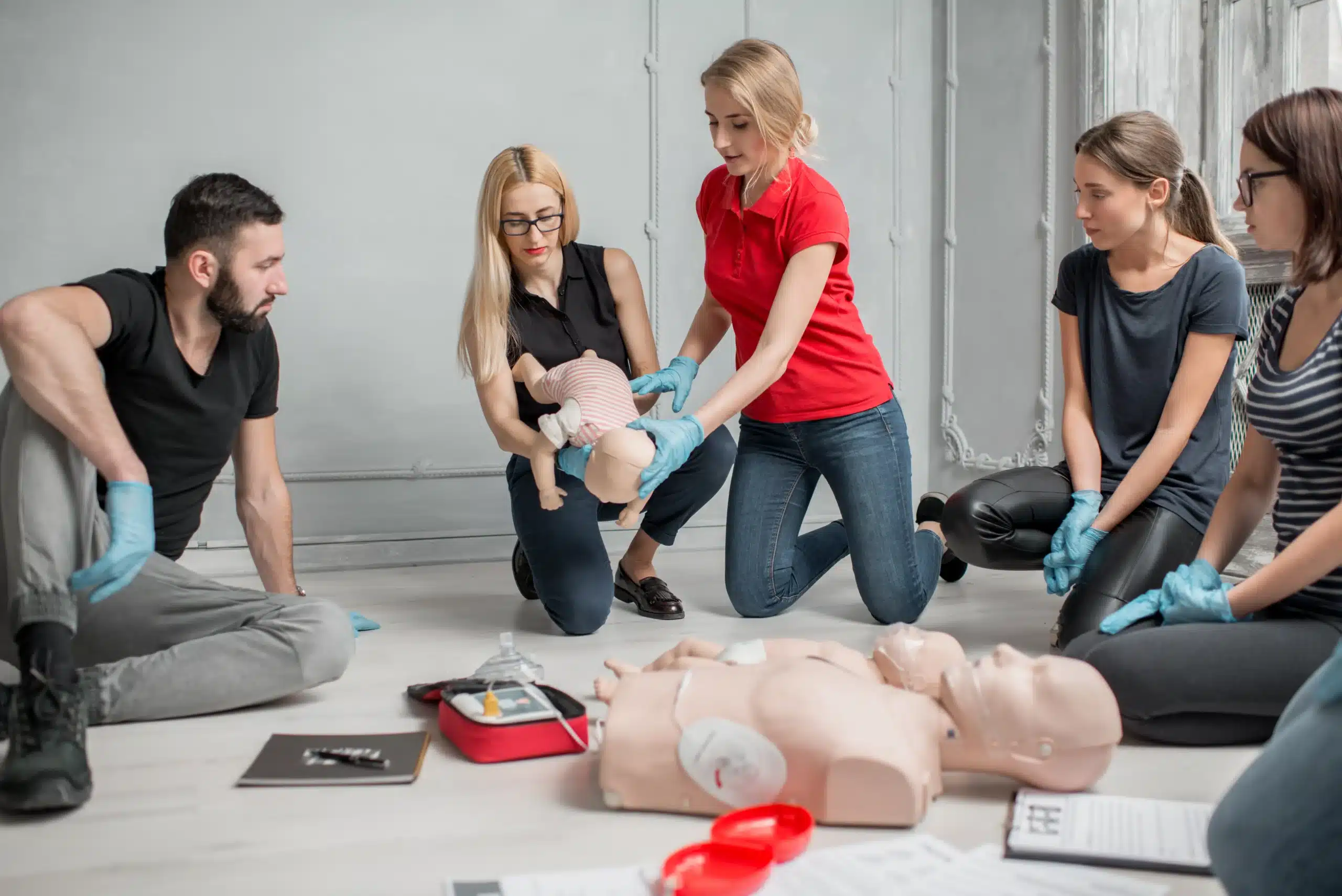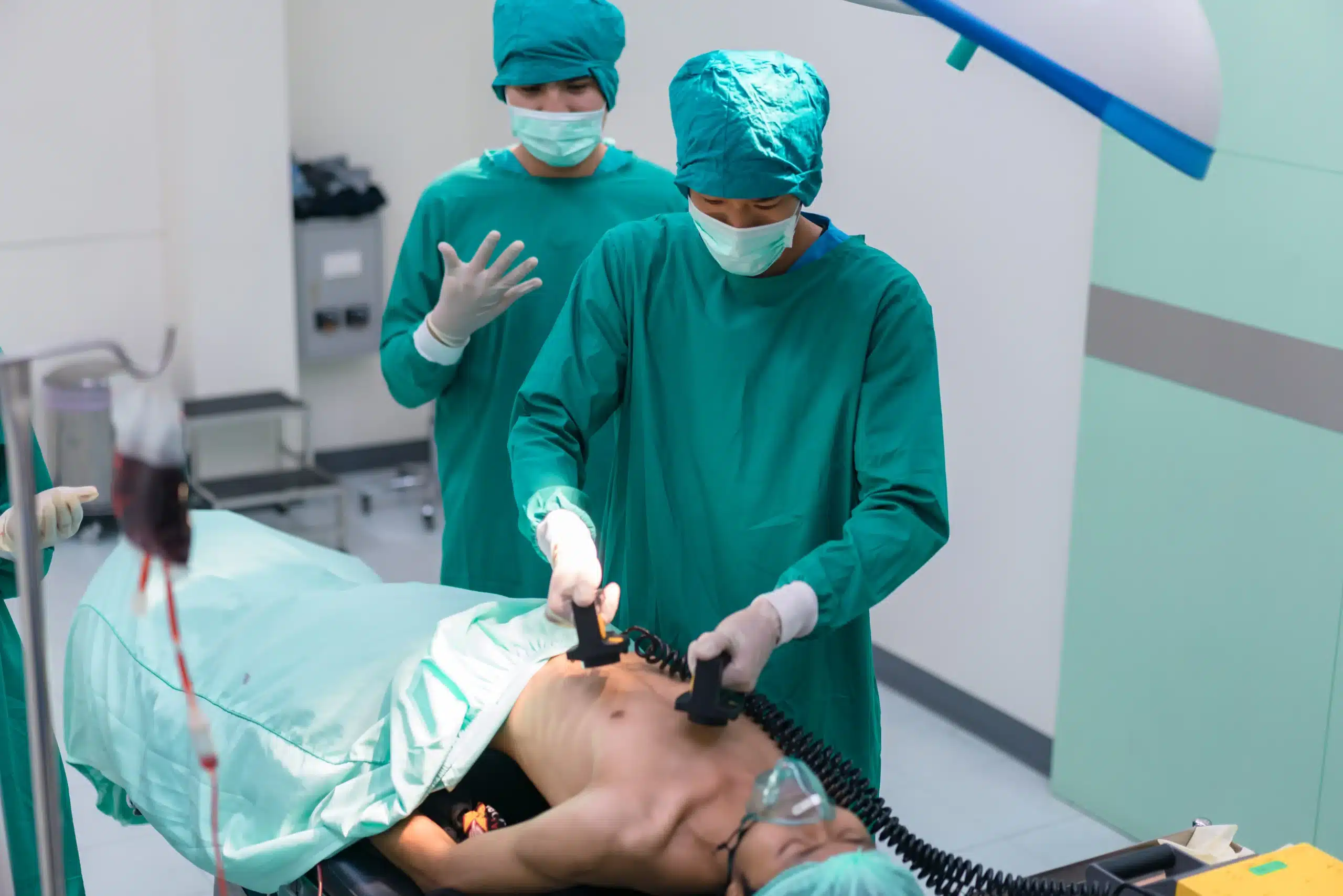Working in healthcare, you know how crucial CPR skills are, but traditional BLS training can be a scheduling nightmare. RQI BLS offers a game-changer: shorter, more frequent sessions that fit your busy life. This blended learning approach combines online modules with hands-on practice, ensuring your skills stay sharp. Plus, real-time feedback helps you refine your technique and boost your confidence. If you’re searching for “RQI BLS Classes near me,” this article breaks down everything you need to know about RQI BLS, from its benefits to finding a course that fits your needs.
Key Takeaways
- RQI BLS provides flexible CPR training that fits your schedule: The blended learning format combines online learning with shorter, hands-on skills sessions, making it easier to stay current with your certification.
- Real-time feedback helps you refine your CPR technique: Simulation stations provide immediate feedback on your performance, allowing you to identify areas for improvement and build muscle memory.
- Regular practice with RQI BLS builds confidence for real-world emergencies: Quarterly skills sessions and assessments ensure you maintain proficiency and stay prepared to respond effectively in critical situations.
What is RQI BLS?
RQI, or Resuscitation Quality Improvement, is a program created by the American Heart Association that uses a blended learning approach—online modules combined with hands-on practice—to help healthcare professionals maintain their CPR skills. It’s designed to improve the quality and consistency of CPR performance, ultimately leading to better patient outcomes. Think of it as a continuous improvement program, constantly refining your skills and keeping them sharp. Milpitas CPR Classes offers RQI training as an option for healthcare courses that include CPR.
BLS Training Evolution
Traditional BLS training often involves infrequent, lengthy classroom sessions. This can make it challenging for healthcare providers to retain information and maintain proficiency in CPR techniques. RQI represents a shift in how CPR training is delivered. The RQI 2025 programs follow a low-dose, high-frequency model with quarterly skills refreshers. This approach ensures that skills are regularly practiced and reinforced, leading to higher competency levels. RQI 2025 programs provide learners with an eCredential that verifies their competence in high-quality CPR, with quarterly verification through the American Heart Association.
Key RQI BLS Features
One of the key features of RQI is its flexibility. RQI training may be incorporated into BLS, ACLS, and PALS certification courses. This integration allows healthcare professionals to seamlessly incorporate RQI into their existing training schedules. With RQI training, healthcare professionals gain the ability to practice life-saving skills regularly, improving outcomes and building confidence in critical situations. This regular practice helps providers maintain muscle memory and react effectively in real-world emergencies.
RQI BLS vs. Traditional BLS
RQI BLS and traditional BLS certification both aim to equip healthcare providers with life-saving skills, but their approach to training differs. Understanding these differences can help you choose the best path for your needs.
Frequency & Duration
Traditional BLS courses typically involve a one-time class that covers both theory and practical skills. RQI BLS offers a more flexible, blended learning format. It combines online modules with shorter, more frequent low-dose high-frequency skills sessions. This approach accommodates busy schedules and has been shown to improve long-term skill retention. You can learn more about this approach in Safety Training Seminars’ guide to RQI certification.
Real-Time Feedback & Data-Driven Performance
One of the key advantages of RQI BLS is its use of simulation stations. These stations provide real-time feedback on your CPR performance, including compression rate and depth. This data-driven approach allows you to refine your technique and build muscle memory more effectively than traditional methods. SureFire CPR explains how this technology elevates healthcare training.
Improved Skill Retention & Confidence
Studies show that healthcare professionals trained with RQI tend to deliver higher-quality CPR. They consistently perform chest compressions within the AHA-recommended rate, leading to improved patient outcomes. The regular practice and feedback provided by RQI also boost confidence in critical situations, empowering providers to act decisively during emergencies. RQI’s focus on ongoing practice and real-time feedback helps maintain skills at a higher level than traditional BLS courses. You can explore a comparison of RQI to traditional instructor-led training in this article by CSR E.R.V.A..
Find RQI BLS Classes Near You
So, you’re ready to get your RQI BLS certification? Great! Finding the right class is easier than you think. Here’s a breakdown of how to locate RQI BLS training near you:
Online Resources & Locators
Start your search online. The American Heart Association website offers a course locator tool to find certified training centers. You can also check resources like RQI Partners, which often lists affiliated training sites. Don’t forget the Red Cross—they offer a BLS course for healthcare providers that may meet your needs.
Local Healthcare Organizations
Many hospitals and healthcare systems use RQI for their staff training. Check with local hospitals or clinics—they may offer RQI BLS classes or be able to point you in the right direction. These in-house programs are often convenient for healthcare professionals, allowing for training during work hours. RQI stations are often conveniently located within facilities for easy access.
Community Colleges & Universities
Consider checking with community colleges and universities in your area. Many offer healthcare training programs, including BLS certification courses that align with AHA guidelines. These programs can be a cost-effective option for students and community members.
Milpitas CPR Classes
Looking for RQI BLS training in Milpitas, San Jose, or Santa Clara? Milpitas CPR Classes offers comprehensive RQI programs. We’re an AHA Training Center and provide official certification cards upon completion. Our convenient location and flexible scheduling make it easy to fit training into your busy life. We also offer a range of other AHA courses, including BLS, ACLS, PALS, and CPR/First Aid.
RQI BLS: Cost & Value
When considering RQI BLS training, it’s helpful to understand the costs involved and the value it brings to healthcare professionals and organizations. While traditional BLS courses often involve a larger upfront investment, RQI offers a different approach that can lead to long-term cost savings and improved outcomes.
Typical Prices
The price of the RQI program depends on several factors, including the size of your organization and the specific certifications required (such as BLS or ACLS). For a group of 350 learners, the annual cost of RQI training can be significantly lower than traditional BLS classes—around $14,000 annually for RQI compared to over $26,000 for traditional courses. For more detailed pricing information, refer to these RQI FAQs.
Discounts & Promotions
While cost is a factor in any training decision, remember to weigh it against the long-term benefits. Many training centers offer discounts for group registrations or promotional rates, making BLS certification more accessible. Check with providers like Milpitas CPR Classes to learn about potential cost savings.
Long-Term Benefits for Healthcare Professionals
RQI training offers several advantages beyond cost savings. The program reinforces crucial skills through regular practice, leading to improved patient outcomes and increased confidence in emergencies. Research consistently shows a direct correlation between consistent skills practice and improved CPR quality. Plus, the efficiency of RQI is a major benefit. Each session can be completed in about 15 minutes, including hands-on practice, making it a practical solution for busy healthcare workers. This flexible approach allows for more frequent practice and better skill retention, as highlighted in this comparison of RQI and traditional training.
What to Expect in an RQI BLS Class
So, you’re signed up for an RQI BLS course—great! Here’s a glimpse of what awaits you during your training. This blended learning program combines online learning with hands-on practice, offering flexibility and a focus on mastery.
Course Structure & Technology
RQI BLS classes use a blended learning approach. This means you’ll complete some coursework online at your own pace before attending a shorter, in-person skills session. This flexible format accommodates busy schedules and reinforces learning over time. The online portion covers the cognitive information, while the in-person session focuses on hands-on skills practice and assessment using the RQI Simulation Station. This station provides real-time feedback and personalized coaching based on the 2020 American Heart Association Guidelines for BLS. For more information on how RQI fits into a busy schedule, this article offers helpful insights.
Assessment Methods
RQI BLS uses frequent, low-dose assessments to measure both your cognitive knowledge and practical skills. You’ll complete short quizzes online and perform skills checks on the simulation station. This approach helps you achieve “mastery learning,” meaning you’ll practice and refine your skills until you consistently perform them correctly. These assessments are designed to build confidence and ensure you’re providing high-quality CPR. Studies show RQI-trained professionals deliver more effective chest compressions, staying within the AHA-recommended rate more consistently than those trained with traditional methods. For more information on the program, check out the details on RQI Partners.
Hands-On Practice
The in-person portion of RQI BLS is all about hands-on practice. You’ll work with the RQI Simulation Station, a realistic manikin that provides feedback on your compressions, ventilations, and overall CPR performance. The instructor will guide you through various scenarios and offer personalized coaching to help you improve your technique. This focused practice, combined with the immediate feedback from the simulation station, helps you develop muscle memory and confidence in your CPR skills. RQI training can also be incorporated into other certifications like ACLS and PALS, streamlining your continuing education.
RQI BLS Certification
RQI BLS certification blends online learning with short, frequent skills sessions. This approach helps healthcare providers maintain their CPR skills and knowledge through regular practice and assessment. Here’s a closer look at the process:
Initial Certification Requirements
To get started with RQI BLS, you’ll first complete an online cognitive assessment covering BLS fundamentals. After successfully finishing the online portion, you’ll schedule a hands-on skills session. This session involves demonstrating your CPR skills on a simulation station, which provides personalized feedback and evaluation. The AHA RQI Program offers a comprehensive path to both learning and maintaining these crucial skills, integrating AHA BLS materials and issuing course completion cards.
Maintaining Certification
RQI BLS certification emphasizes ongoing maintenance, unlike traditional BLS certification that typically requires renewal every two years. You’ll participate in short, quarterly skills sessions to refresh your knowledge and refine your technique. This flexible approach, as discussed in this Safety Training Seminars blog post, accommodates busy schedules and improves long-term skill retention. These regular refreshers help ensure you’re always prepared to respond effectively in an emergency.
Recertification Options
RQI BLS certification follows a “low-dose, high-frequency” model. You’ll recertify each quarter through short refresher courses. These sessions, described by RQI Partners, involve both cognitive assessments via eLearning and hands-on skills practice using the RQI Simulation Station. This ongoing process keeps your skills sharp and maintains your confidence in providing high-quality CPR.
RQI BLS Benefits for Healthcare Providers
RQI BLS offers significant advantages for healthcare providers, impacting everything from patient care to professional development. Let’s explore some key benefits:
Improved CPR Quality & Patient Outcomes
High-quality CPR is crucial for improving patient outcomes during cardiac arrest. RQI BLS emphasizes consistent, high-quality compressions and ventilations. Studies show RQI-trained healthcare professionals deliver compressions within the AHA-recommended rate more consistently. This regular practice leads to improved CPR quality and, ultimately, better patient outcomes. This focus on quality sets RQI apart.
Increased Confidence in Emergencies
Facing a cardiac arrest can be stressful for any healthcare provider. RQI BLS equips providers with the skills and confidence to respond effectively in these critical situations. Through regular practice and real-time feedback, RQI builds proficiency and reduces anxiety, allowing healthcare professionals to act decisively when every second counts.
Healthcare Standards Compliance
Maintaining compliance with healthcare standards is essential for any medical facility. RQI BLS helps providers meet these standards through an evidence-based approach to CPR training. The program aligns with the latest AHA guidelines and provides learners with an eCredential verifying their competence. This documentation simplifies compliance reporting and demonstrates a commitment to high-quality patient care. It also streamlines training and ensures consistent skill levels across the healthcare team.
Implement RQI BLS in Healthcare Settings
RQI BLS offers a practical and efficient way to integrate high-quality CPR training into healthcare settings. Its flexible approach allows for seamless incorporation into existing training programs, boosts staff engagement, and significantly improves emergency preparedness. Let’s explore how you can effectively implement RQI BLS within your organization.
Integrate with Existing Training
RQI BLS easily integrates with current training protocols. The program’s blended learning format combines online modules with short, frequent skills sessions. This adaptable structure fits busy healthcare schedules and minimizes disruption to existing workflows. You can incorporate RQI BLS into onboarding for new hires, annual skills assessments, or as a standalone training initiative. This flexible training accommodates various learning styles and departmental needs.
Staff Engagement & Continuous Learning
RQI BLS fosters ongoing engagement with CPR skills. Unlike traditional BLS courses that often involve lengthy, infrequent sessions, RQI provides regular opportunities for practice and reinforcement. This approach improves long-term skill retention and boosts confidence among healthcare professionals. Regular practice translates to improved competence and quicker response times in real-world emergencies. The data-driven feedback mechanism within RQI further enhances engagement by allowing staff to track their progress and identify areas for improvement.
Impact on Emergency Preparedness
RQI BLS significantly strengthens emergency preparedness within healthcare facilities. The program’s emphasis on frequent, low-dose training ensures that staff maintain a high level of CPR proficiency. This consistent reinforcement of skills leads to improved quality of chest compressions and adherence to AHA guidelines, ultimately increasing the chances of positive patient outcomes. The concise nature of RQI training sessions, often completed in as little as 15 minutes, maximizes training efficiency. This allows healthcare providers to dedicate more time to patient care while remaining prepared for any emergency. The impact of RQI training is evident in improved CPR performance and a greater sense of preparedness among healthcare teams.
Choose the Right RQI BLS Program
Finding the right RQI BLS program involves considering several key factors. It’s not just about checking a box; it’s about investing in training that equips you with the skills and confidence to perform effectively in critical situations. Here’s what to look for:
Evaluate Program Quality
A high-quality RQI BLS program offers more than just the basics. Look for a program that emphasizes a blended learning format, combining online modules with hands-on practice. This approach, as highlighted by Safety Training Seminars, allows for flexible learning and often leads to better long-term skill retention. Shorter, more frequent sessions can also be beneficial, especially for busy healthcare professionals. A good program should also align with the latest American Heart Association guidelines and use up-to-date equipment. Consider programs offering continuing education credits, which can be valuable for maintaining professional certifications.
Instructor Qualifications
Experienced, certified instructors are essential for an effective RQI BLS program. Instructors should not only be knowledgeable about the latest resuscitation techniques but also possess strong communication and leadership skills. As CSR E.R.V.A points out, team-based resuscitation training is a valuable component of many instructor-led courses. This focus helps participants develop crucial teamwork and communication skills needed during real-life emergencies. Choose a program where instructors actively facilitate these dynamics and provide personalized feedback. Check if the instructors have specialized certifications or experience in specific areas, such as pediatric advanced life support (PALS) or advanced cardiac life support (ACLS), if relevant to your needs.
Reviews & Testimonials
Before committing to a program, take the time to research its reputation. Reading reviews and testimonials from past participants can offer valuable insights into the program’s strengths and weaknesses. Look for evidence that the program effectively prepares healthcare professionals to deliver high-quality CPR. SureFire CPR notes studies showing that RQI-trained professionals often perform chest compressions at the recommended rate more consistently than those trained through traditional methods. This kind of data-driven feedback can help you gauge the program’s effectiveness. Don’t hesitate to contact the training center directly with questions. A reputable provider will be happy to address your inquiries and provide further information. Consider factors like class size and the training center’s overall environment when making your decision. A comfortable and supportive learning environment can significantly impact your learning experience.
RQI BLS Providers & Resources
This section explores key organizations involved in developing, delivering, and supporting RQI BLS training.
American Heart Association (AHA)
The American Heart Association (AHA) plays a vital role in establishing guidelines and standards for CPR and emergency cardiovascular care. The AHA RQI Program sets the benchmark for high-quality BLS training and certification. It’s the only program integrating AHA BLS materials and official course completion cards, ensuring healthcare professionals receive training aligned with the latest scientific evidence. This commitment to ongoing education and competency maintenance underscores the AHA’s dedication to improving patient outcomes.
RQI Partners
RQI Partners is a collaborative venture between the AHA and Laerdal Medical, focused on delivering innovative CPR training solutions. RQI Partners offers programs for healthcare organizations that leverage technology and data-driven insights to enhance CPR skills and knowledge retention. This partnership combines the AHA’s expertise in resuscitation science with Laerdal’s simulation technology, creating a powerful platform for improving CPR performance.
Laerdal Medical
Laerdal Medical is a global leader in healthcare simulation and training solutions. As a key partner in the RQI program, Laerdal provides the advanced technology and resources that make learning more engaging and effective. Their innovative approach to simulation helps healthcare professionals develop critical thinking skills and build confidence in performing CPR during real-life emergencies.
HealthStream
HealthStream offers a comprehensive platform for managing and delivering healthcare training programs, including RQI courses. HealthStream helps organizations ensure compliance with training requirements and maintain competency in essential life-saving skills like CPR. Their platform streamlines training administration, tracking, and reporting, making it easier for healthcare providers to stay current with their certifications.
Milpitas CPR Classes
For those seeking RQI BLS training in the Milpitas, San Jose, and Santa Clara areas, Milpitas CPR Classes offers convenient scheduling and hands-on practice. This focus ensures participants gain practical experience and confidence in applying their BLS skills. Their commitment to accessible, high-quality training makes them a valuable resource for healthcare professionals and community members.
Related Articles
- RQI in Santa Clara: The Ultimate Guide to CPR Training – Milpitas CPR Classes
- RQI Certification San Jose: Your Complete Guide – Milpitas CPR Classes
- RQI in Milpitas: Your Guide to CPR Certification – Milpitas CPR Classes
- RQI Classes in Milpitas, CA – Milpitas CPR Classes
Frequently Asked Questions
How is RQI different from traditional BLS training? RQI BLS uses a blended learning approach—online modules combined with shorter, more frequent hands-on skills sessions—while traditional BLS typically involves a longer, one-time class. RQI also incorporates real-time feedback and simulation technology, leading to improved skill retention and confidence.
Why should I choose RQI BLS over traditional BLS? RQI BLS offers more flexibility and focuses on consistent practice, which has been shown to improve long-term skill retention and CPR quality. The real-time feedback and data-driven approach also help you refine your technique and build muscle memory more effectively. If you’re looking for a more engaging and efficient way to maintain your BLS skills, RQI might be a better fit.
How much does RQI BLS certification cost? The cost of RQI BLS varies depending on factors like your location, the training center, and whether you’re taking the course individually or as part of a group. It’s best to contact training providers directly for specific pricing information. Many centers offer discounts for group registrations or bundled courses.
Where can I find RQI BLS classes near me? You can find RQI BLS classes through several avenues: the American Heart Association’s website, online course locators, local hospitals and healthcare systems, community colleges, and specialized training centers like Milpitas CPR Classes.
What can I expect during an RQI BLS class? Expect a blended learning experience with online modules covering the cognitive aspects of BLS and in-person sessions focused on hands-on skills practice and assessment. You’ll use simulation stations that provide real-time feedback on your CPR performance, allowing you to refine your technique and build confidence.
